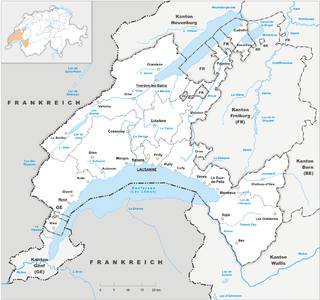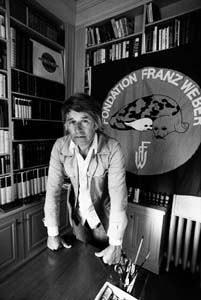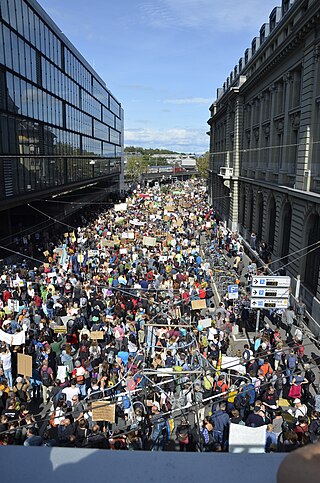History
In 1909, representatives of the Swiss Society of Natural Sciences founded the Swiss League for the Protection of Nature (German: Schweizerischen Bund für Naturschutz, French: Ligue suisse pour la protection de la nature) to fund and create the Swiss National Park (inaugurated in 1914). [4] In 2000, Pro Natura launched a campaign supporting the creation of a second Swiss National Park. [5]
In 1947, the Swiss League for the Protection of Nature organised an international conference on the protection of nature in Brunnen. [6] It resulted in the creation of the International Union for Conservation of Nature in 1948. [6]
Between 1958 and 1963, the Swiss League for the Protection of Nature, together with the Swiss Heritage Society and the Swiss Alpine Club, established an inventory of landscapes and natural sites of national importance. [6] Based on it, the Swiss Federal Council published the Federal Inventory of Landscapes and Natural Monuments in 1977. [6]
Since 1995, Pro Natura has been a member of the global environmental network Friends of the Earth. [4] In 1997, the Swiss League for the Protection of Nature adopted the name Pro Natura. [4] [7]

Friends of the Earth International (FoEI) is an international network of grassroots environmental organizations in 73 countries. About half of the member groups call themselves "Friends of the Earth" in their own languages; the others use other names. The organization was founded in 1969 in San Francisco by David Brower, Donald Aitken and Gary Soucie after Brower's split with the Sierra Club because of the latter's positive approach to nuclear energy. The founding donation of $500,000 was provided by Robert Orville Anderson, the owner of Atlantic Richfield oil company. It became an international network of organizations in 1971 with a meeting of representatives from four countries: U.S., Sweden, the UK and France.

Lake Geneva is a deep lake on the north side of the Alps, shared between Switzerland and France. It is one of the largest lakes in Western Europe and the largest on the course of the Rhône. Sixty per cent of the lake belongs to Switzerland and forty per cent to France.

Vaud, more formally the canton of Vaud, is one of the 26 cantons forming the Swiss Confederation. It is composed of ten districts and its capital city is Lausanne. Its coat of arms bears the motto "Liberté et patrie" on a white-green bicolour.

Yverdon-les-Bains is a municipality in the district of Jura-Nord vaudois of the canton of Vaud in Switzerland. It is the seat of the district. The population of Yverdon-les-Bains, as of December 2020, was 29,955.

The Swiss National Park is located in the Western Rhaetian Alps, in eastern Switzerland. It is within the canton of Graubünden, between Zernez, S-chanf, Scuol, and the Fuorn Pass in the Engadin valley on the border with Italy.
Friends of Nature is a non-profit organisation with a background in the social democratic movement, which aims to make the enjoyment of nature accessible to the wider community by providing appropriate recreational and travel facilities. It encourages sustainable tourism and international friendship.
A nature park, or sometimes natural park, is a designation for a protected natural area by means of long-term land planning, sustainable resource management and limitation of agricultural and real estate developments. These valuable landscapes are preserved in their present ecological state and promoted for ecotourism purposes.

Brunnen is a resort on Lake Lucerne in Switzerland, part of the municipality Ingenbohl, at 46°59′44″N8°36′17″E.
The Federal Inventory of Landscapes and Natural Monuments in Switzerland aims to protect landscapes of national importance. The inventory is part of a 1977 Ordinance of the Swiss Federal Council implementing the Federal Law on the Protection of Nature and Cultural Heritage.

Franz Weber was a Swiss environmentalist and animal welfare activist.
In Switzerland, the designation as a historic monument is intended to protect a National Heritage Site such as a monument or a building notable for its history or architecture. The list is kept by the organization for Cultural heritage protection in Switzerland.
The Göncöl Foundation is the Hungarian environmental organisation, seated in the Göncöl House in Vác, Hungary. The Foundation, created in his present form in 1989, is a not-for-profit, non-partisan organisation independent of any political or commercial interest. It is the core of a structured, not-for-profit Alliance of legal bodies, individuals, NGOs, volunteers and experts. The Foundation is winner of the Hungarian Pro Natura Price (1993), an award on nature conservation.

Prangins Castle is a castle in the municipality of Prangins of the Canton of Vaud in Switzerland. It is a Swiss heritage site of national significance.

Guy Bernard Parmelin is a Swiss politician, who served as president of Switzerland in 2021, having previously served as vice president of Switzerland in 2020. A member of the Swiss People's Party (SVP/UDC), he has been a member of the Swiss Federal Council since 2016. Parmelin has served as head of the Department of Economic Affairs, Education and Research since 2019, previously heading the Department of Defence, Civil Protection and Sports between 2016 and 2018.

Switzerland has eighteen official natural parks classified in three categories.

The Federal Office for the Environment is the Swiss environmental agency, a division of the Federal Department of Environment, Transport, Energy and Communications. It is responsible for matters of the environment, including the protection of plants and animals and the protection against noise, air pollution or natural hazards.

The environmental movement in Switzerland is represented by a wide range of associations.

Many parts of Scotland are protected in accordance with a number of national and international designations because of their environmental, historical or cultural value. Protected areas can be divided according to the type of resource which each seeks to protect. NatureScot has various roles in the delivery of many environmental designations in Scotland, i.e. those aimed at protecting flora and fauna, scenic qualities and geological features. Historic Environment Scotland is responsible for designations that protect sites of historic and cultural importance. Some international designations, such as World Heritage Sites, can cover both categories of site.

Marguerite Narbel-Hofstetter was a Swiss biologist and politician who served on the Grand Council of Vaud from 1970 until 1986. A member of the Liberal Party of Switzerland, Narbel became the first woman to serve as president of the council in 1981.















